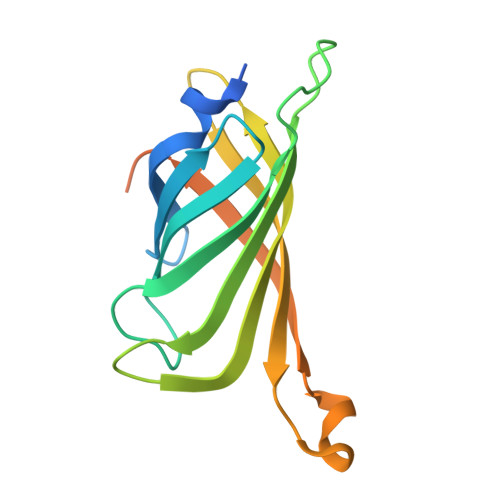Selective oxidation of active site aromatic residues in engineered Cu proteins.
Uyeda, K.S., Follmer, A.H., Borovik, A.S.(2024) Chem Sci 16: 98-103
- PubMed: 39600509
- DOI: https://doi.org/10.1039/d4sc06667g
- Primary Citation of Related Structures:
9CST, 9CSU, 9CSV, 9CSW, 9E6Z - PubMed Abstract:
Recent studies have revealed critical roles for the local environments surrounding metallocofactors, such as the newly identified Cu D site in particulate methane monooxygenases (pMMOs) and the second sphere aromatic residues in lytic polysaccharide monooxygenases (LPMOs), implicated in the protection against oxidative damage. However, these features are subjects of continued debate. Our work utilizes biotin-streptavidin (Sav) technology to develop artificial metalloproteins (ArMs) that mimic the active sites of natural copper metalloenzymes. By engineering ArMs with aromatic residues within their secondary coordination spheres, we systematically investigate the influence of these residues on Cu reactivity and oxidant activation. We demonstrate that the placement and orientation of tyrosine relative to the Cu cofactor critically affect the oxidation outcomes upon exposure to hydrogen peroxide. A key finding is the interplay between the coordination of an active site asparagine and the incorporation of aromatic residues proximal to the artificial Cu cofactor, which are the only variants where oxidation of an engineered residues is observed. These findings underscore the importance of the secondary coordination sphere in modulating Cu center reactivity, suggest a role for amide coordination in C-H bond activation by pMMOs, and potential inactivation pathways in natural copper enzymes like LPMOs.
- Department of Chemistry, University of California-Irvine Irvine CA 92697 USA afollmer@uci.edu aborovik@uci.edu.
Organizational Affiliation:



















